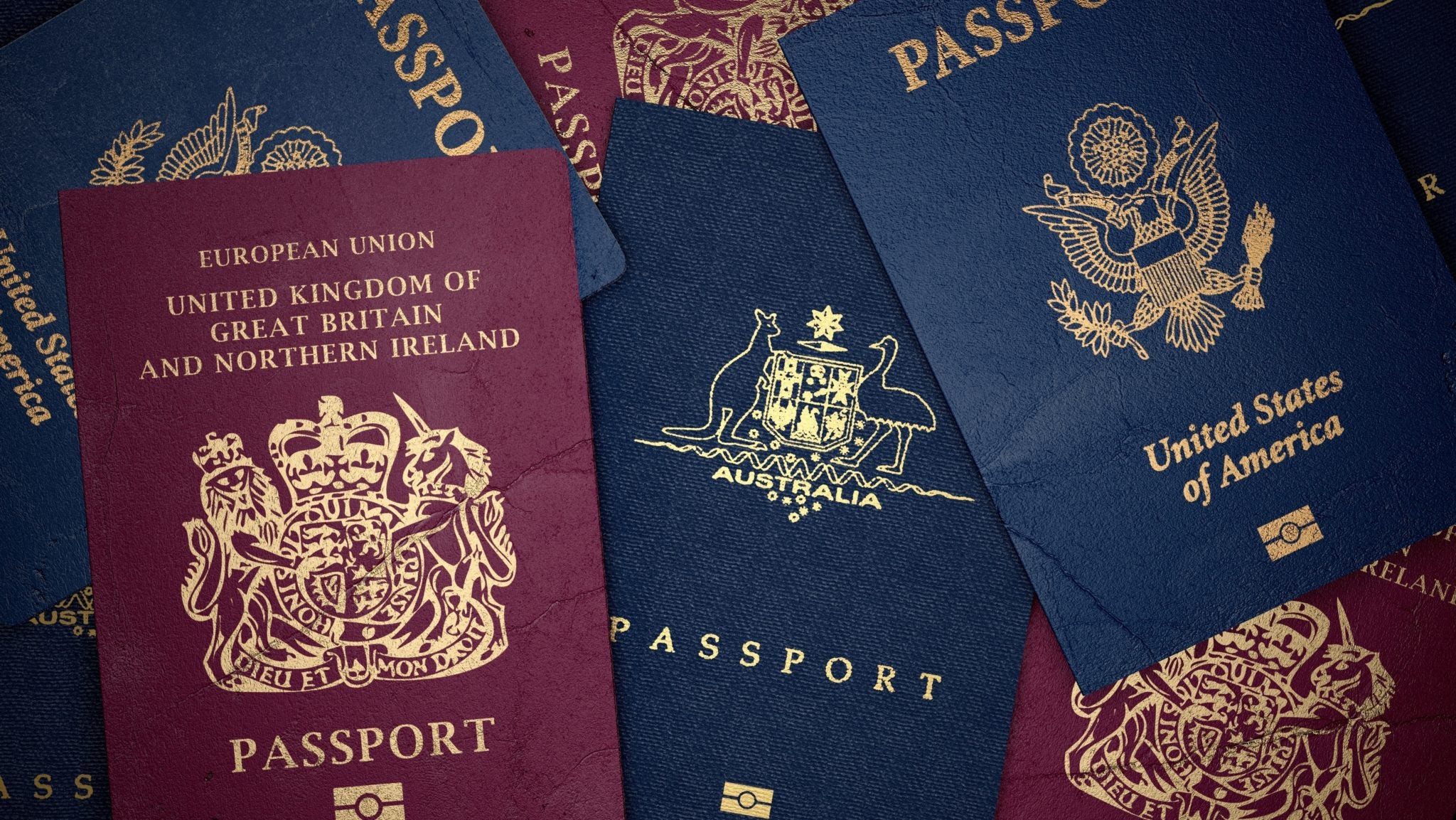Have you ever wondered what the first American passports looked like? Did you know they weren’t always the familiar blue we see today? The evolution of the US passport is a fascinating journey through time, reflecting changes in national identity, technology, and security concerns. Join us on a captivating expedition to discover the original color of US passports and the intriguing story behind its transformation.

Image: visa-faq.com
The first US passports were issued in 1795, following the adoption of the Constitution. As the newly formed nation asserted its independence and established diplomatic relations with other countries, the need for a standardized travel document became apparent. These early passports, however, were starkly different from the ones we carry today. They were not printed on durable paper with intricate designs. Instead, they were handwritten documents, often comprising just a single sheet of paper. But what was the color of these original passports?
The Early Years: No Set Color, Only Formality
The early US passports lacked a designated color. They were simply written on plain white paper and issued by the Secretary of State. This meant that the exact appearance could vary significantly, depending on the individual who created it. While the exact color wasn’t standardized, the content remained consistent, including the traveler’s name, place of residence, destination, and the purpose of travel.
These early passports served as simple declarations of identity and authorization to travel, signifying the holder’s right to pass through foreign territories. Their design was barebones, lacking the elaborate security features that have become synonymous with modern passports. The handwritten format was prone to forgery, leaving security vulnerabilities that would be addressed in later decades.
The Dawn of Printed Passports: A Transition Towards Standardization
The 19th century witnessed a shift towards printed passports in the United States, marking a turning point in their evolution. The introduction of printing technology not only accelerated the issuance process but also facilitated greater consistency in their appearance. While the exact color still varied, the shift towards printed passports signified a step towards standardization.
Early printed passports, still primarily on white paper, began to incorporate official seals and embossed stamps. These additions enhanced security and provided visual validation of their authenticity. While printed passports offered advantages in terms of uniformity and security, they were still susceptible to manipulation and alteration.
Toward a Standardized Identity: The Rise of Green and Red Passports
As the 20th century unfolded, the US government recognized the need for a more robust passport system to combat increasing international travel and potential security threats. In 1918, the US introduced passports printed on green paper, representing a significant step toward the familiar green passports that would become synonymous with US travel for decades.
The choice of green was not arbitrary. It was a deliberate move to distinguish US passports from those of other nations, reducing the possibility of counterfeiting. Green also embodied a sense of stability and trust, projecting a clear and recognizable identity for American travelers. This shift toward a standardized green color marked a significant change in the history of US passports.

Image: upgradedpoints.com
A Change in Color, A Change in Identity: The Transition to Blue
The familiar blue US passports were introduced in 2007, representing a subtle but significant shift in the nation’s travel document. The transition from green to blue was prompted by a desire to modernize the passport’s appearance and enhance its security features. The blue passport reflects a contemporary aesthetic, signaling a commitment to enhanced security and technological advancement.
The choice of blue was partly inspired by the color’s association with trust, freedom, and reliability. It also served as a visual distinction from other passports, ensuring easy recognition by international authorities. The new blue passports incorporate advanced security elements, including intricate designs, biographic data pages, and digital security features.
The Importance of the Original Color: A Reflection of Identity
While the original color of US passports may seem like a trivial detail, it reflects the evolution of the nation’s identity and the growing importance of security in international travel. From the handwritten documents on plain white paper to the vibrant blue passports of today, each change symbolizes a step toward greater standardization, security, and global recognition.
The original color of US passports, despite its simplicity, served as a testament to the nascent nation’s commitment to international engagement and the evolving need for secure travel documents. It reminds us that the passport, beyond being a mere travel document, represents the holder’s identity, their right to travel freely, and their connection to a specific nation.
What Was The Original Color Of Us Passports
Conclusion: A Legacy of Transformation
The journey of US passports is a fascinating chronicle of technological advancement, security concerns, and national identity. From the simple white paper documents of the early years to the secure and technologically advanced blue passports of today, the evolution of US passports underscores the evolving needs of a nation navigating a globalized world. While the original color may be lost to history, the lessons learned from its transformation remain relevant, highlighting the importance of secure travel documents and the ongoing quest for enhanced security and global recognition.






